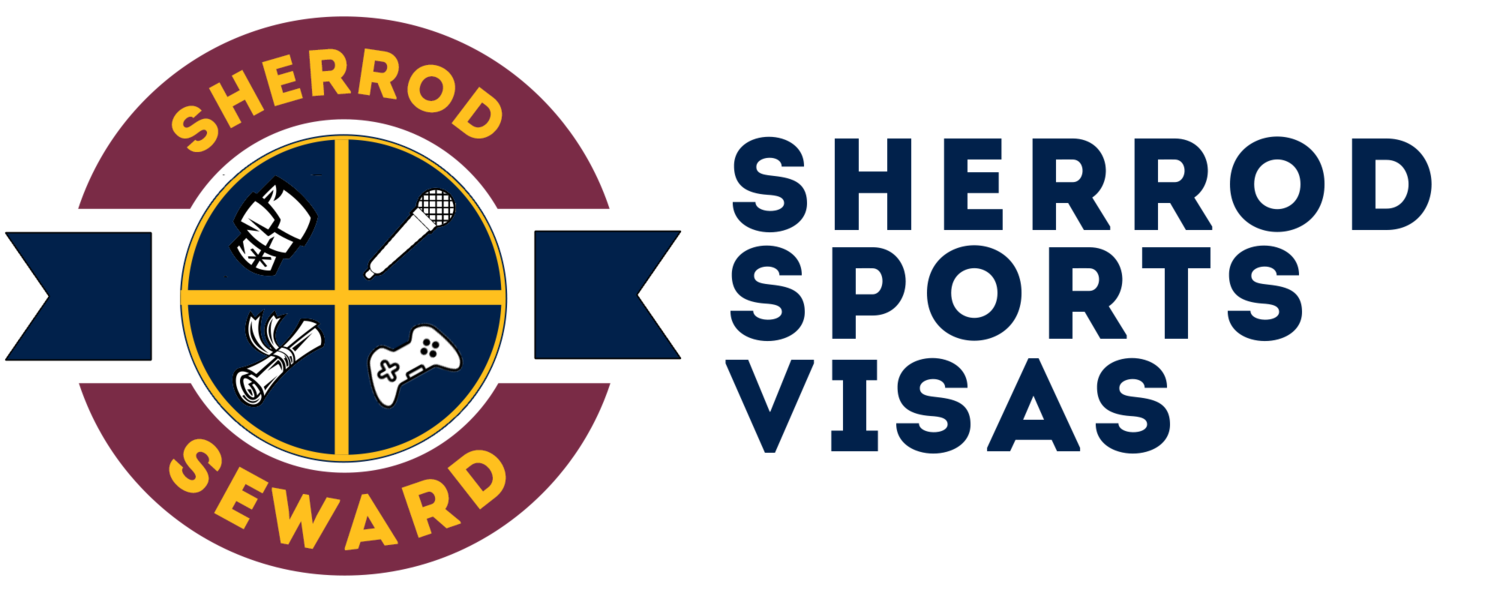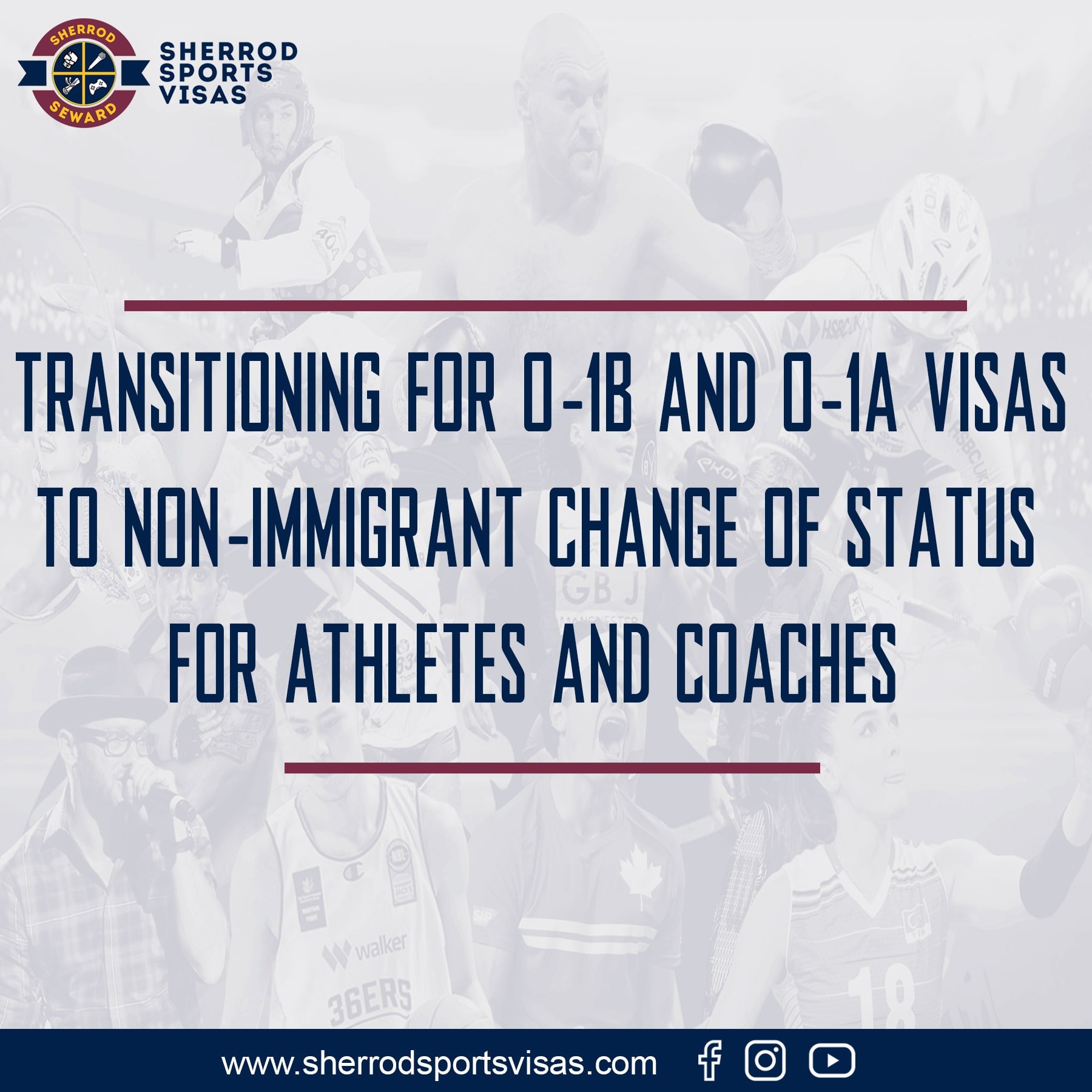Transitioning for Short Term O-1B and O-1A Visas to Long Term non-immigrant visas by change of status for Athletes and Coaches
Sherrod Sports Visas is here to help athletes and coaches from different countries who have the O-1A and O-1B visa classification. Individuals who have obtained the O-1A and O1-B visa often are only granted status for a couple of months. This is because O-1 visas are often only issued for a certain project/commitment here in the United States. Once that time period has passed, these athletes or coaches are expected to return back to their home country.
In cases like this, athletes and coaches typically want to stay in the United States longer than what their O-1A or O-1B visa allows them to. Since this happens to most, our agency offers a solution to apply for a new visa to allow them to continue to compete and train in their designated sports.
The process of adjustment from O-1A and O-1B status to a non-immigrant 3 year status:
Transitioning from the O-1A and O-1B visa to non-immigrant status is not simple, but we are here to help. The first step is finding a different petitioner (www.oaklg.com/petitioner) from the athlete's previous case. The individual who petitions you needs to be a citizen or permanent resident of the United States, or if it’s a company they must reside in the United States.
The person/company who petitions these athletes and coaches do not necessarily need to be their employer. There are many companies who can solely be an Agent Petitioner such as SDS Talent Agency (www.sdsagency.io)
Examples of U.S. Agent Petitioners
U.S. Agents who file for foreign employers, where an athlete/coach/support staff is outside the country and state that the beneficiaries will work for them.
U.S. Agents who are the employer, these agents will provide work and help with the careers of the beneficiaries and third party authorizations are not required.
Lastly, U.S. Agents who file for more than one employer, these agents have no say in the careers of the beneficiaries and authorization from the actual employers must be acquired.
Sherrod Sports Visas typically advocate for the U.S. agents of foreign employers only because they don’t require third parties to authorize the athletes to receive the O-1 visa.
Next, we need to establish an agenda for the athlete or coach over the upcoming three years. This is where the beneficiary basically makes a schedule of events where they will be competing, where they will be training, and any projects that they will work on etc. This proves the reasons to stay in the United States for work. Once the list is made and after being approved there is still a chance to add more ventures that the beneficiary may pursue. We also recommend the athlete to state appropriate dates, their salary, and what exactly they are going to be doing.
Lastly, most beneficiaries will typically already be in the United States having their O-1A and O-1B visas and have that option to stay in the United States during the transition to the extended non-immigrant visa. When applying for the new visa, it is important to apply before the expiration of the previous O-1A or O-1B visa of the beneficiary. Once the athlete applies, they are permitted to stay in the United States while the new application is pending. It is also very important to keep in mind the time that passes between the date of expiration of the old visa and the decision of the new visa. Because there is a possibility of denial, we must also ensure that the application does not pass longer than 6 months after the expiration.
The new application for the O-1A or O-1B visa is usually under the category of New Employment or Concurrent Employment. Current Employment is when the foreign athlete has two visas at the same time but both the visas need to be under the same category. As an example, an athlete can have two O-1B visas but cannot have the O-1A and the O-1B visa at once.
Some other categories to change or extend the O-1 visas on the I-129 form are:
Extension of Previously Approved Employment without Changes
Amendment of Previously Approved Employment
Another option for the athletes is consular processing, that is if the foreign athlete plans to return to their home country or just leave the United States. When choosing this option, the beneficiary can apply for the new visa whenever they desire but will need to schedule an interview to apply for their passport after attending the visa interview. If he/she decides to leave there is a chance to apply for an interview waiver (www.sherrodsportsvisas.com/interview-waiver)
If you or someone you know wants to make the transition from O-1A or O-1B visa with an extended period, contO-act our firm or visit our website www.sherrodsportsvisa.com

